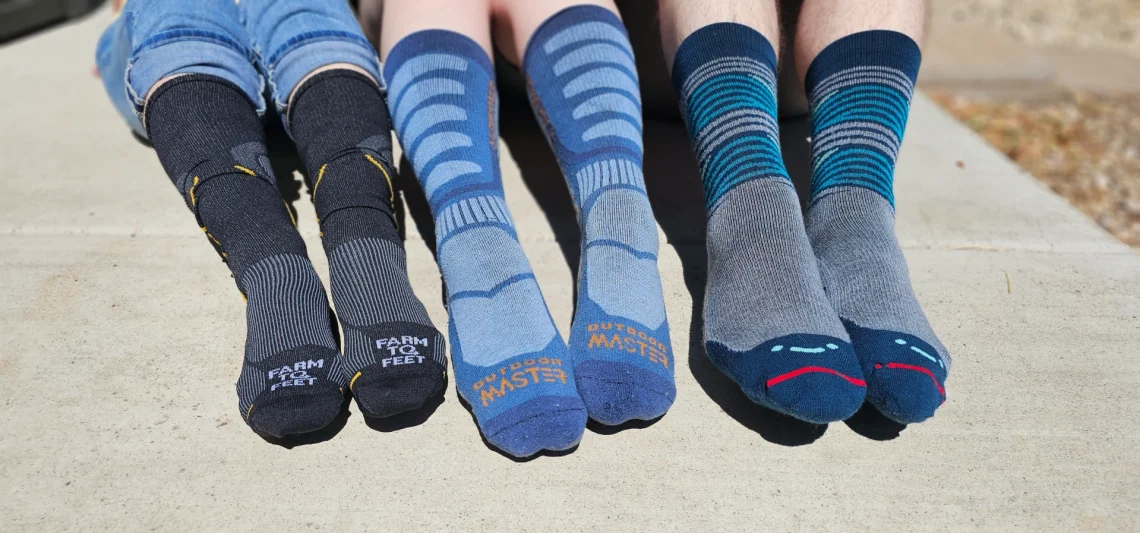The Ultimate Guide: Do Hiking Socks Make a Difference?
Hiking is a fantastic way to connect with nature, but it can also be demanding on your feet. Choosing the right gear is crucial for a comfortable and safe experience. Many hikers overlook the importance of socks, focusing instead on boots and backpacks. However, the socks you wear can significantly impact your comfort, performance, and overall enjoyment of the hike. So, do hiking socks make a difference? Absolutely! Let’s delve into why.
The Science of Hiking Socks: Materials and Construction
Hiking socks aren’t just any old socks. They are engineered with specific materials and construction techniques to address the unique challenges of hiking. Let’s explore the key components:
Material Matters
- Merino Wool: Known for its excellent moisture-wicking properties, breathability, and odor resistance. It stays warm even when wet.
- Synthetic Fibers (Nylon, Polyester, Acrylic): Durable, quick-drying, and often blended with other materials to enhance performance.
- Silk: Lightweight and comfortable, often used as a liner sock to reduce friction.
Construction Techniques
The way a sock is constructed also plays a vital role. Look for features like:
- Cushioning: Provides extra padding in high-impact areas like the heel and ball of the foot.
- Arch Support: Helps to reduce fatigue and improve stability.
- Seamless Toe Closure: Minimizes friction and prevents blisters.
- Reinforced Heel and Toe: Increases durability in areas prone to wear and tear.
Pro Tip: Always check the sock’s fiber content. A blend of materials often provides the best balance of comfort, durability, and performance.
Benefits of Wearing Hiking Socks
So, what are the tangible benefits of investing in quality hiking socks? Here are a few key advantages:
- Moisture Management: Hiking socks wick away sweat, keeping your feet dry and preventing blisters.
- Blister Prevention: Reduced friction and moisture minimize the risk of blisters.
- Temperature Regulation: They help regulate your foot temperature, keeping them warm in cold weather and cool in hot weather.
- Comfort and Support: Cushioning and arch support provide added comfort and reduce fatigue.
- Odor Control: Materials like merino wool naturally resist odor.
Choosing the Right Hiking Socks: A Step-by-Step Guide
Selecting the perfect hiking socks depends on several factors, including the type of hike, weather conditions, and personal preferences. Here’s a guide to help you choose:
Consider the Hike
- Day Hike: Medium-weight socks with good cushioning and moisture-wicking properties;
- Multi-Day Hike: Durable, moisture-wicking socks with extra cushioning and odor resistance.
- Cold Weather Hike: Heavyweight wool socks for maximum warmth and insulation.
- Hot Weather Hike: Lightweight socks with excellent breathability and moisture-wicking properties.
Think About the Weather
Adjust your sock choice based on the expected weather conditions. Wool is great for cold and wet weather, while synthetic blends are ideal for hot and humid conditions.
Pay Attention to Fit
A proper fit is essential for preventing blisters. Socks should fit snugly without being too tight. Make sure the heel cup aligns correctly with your heel.
Pro Tip: Try on hiking socks with your hiking boots to ensure a comfortable and secure fit.
FAQ: Frequently Asked Questions About Hiking Socks
Q: How often should I change my hiking socks?
A: Ideally, you should change your socks daily, especially on multi-day hikes. If your feet sweat excessively, consider changing them more frequently.
Q: Can I wear regular socks for hiking?
A: While you can, it’s not recommended. Regular socks don’t offer the same level of moisture management, cushioning, and blister protection as hiking socks. This can lead to discomfort and potential foot problems.
Q: How do I wash my hiking socks?
A: Follow the manufacturer’s instructions. Generally, machine wash in cold water and tumble dry on low heat. Avoid using bleach or fabric softeners, as they can damage the fibers.
Q: Are liner socks necessary?
A: Liner socks can be beneficial for reducing friction and preventing blisters, especially for those prone to foot problems. They are a thin layer worn underneath your main hiking socks.






